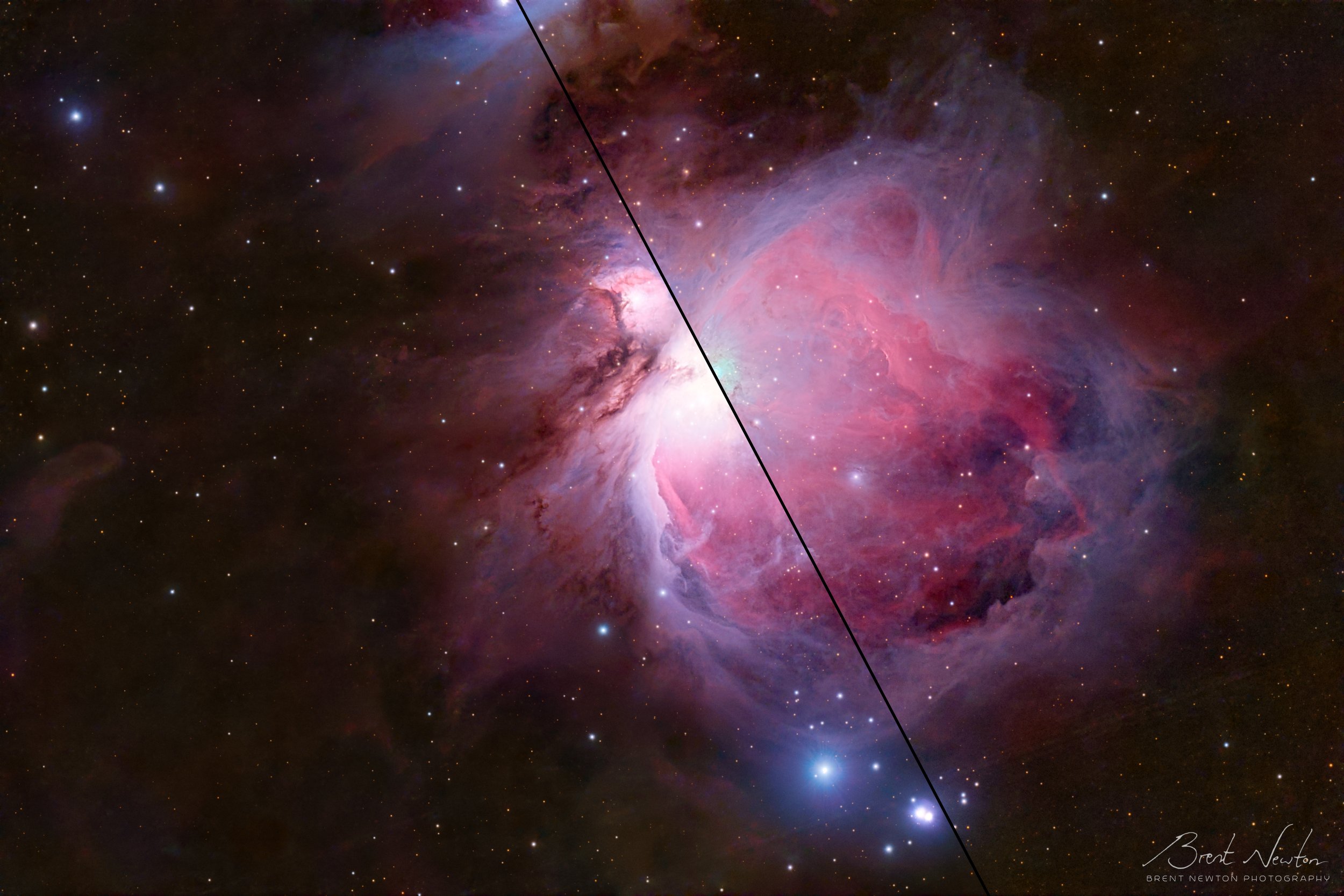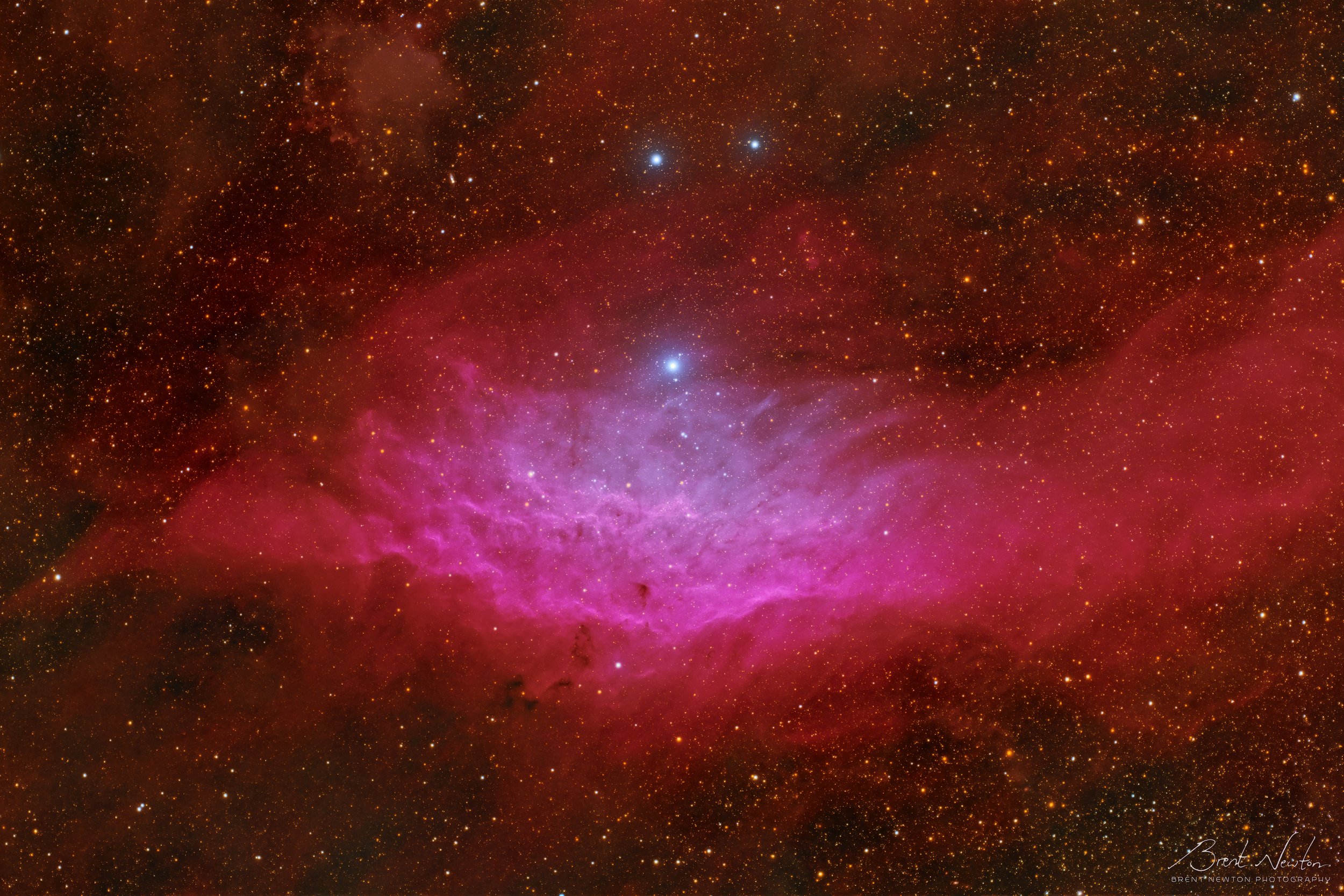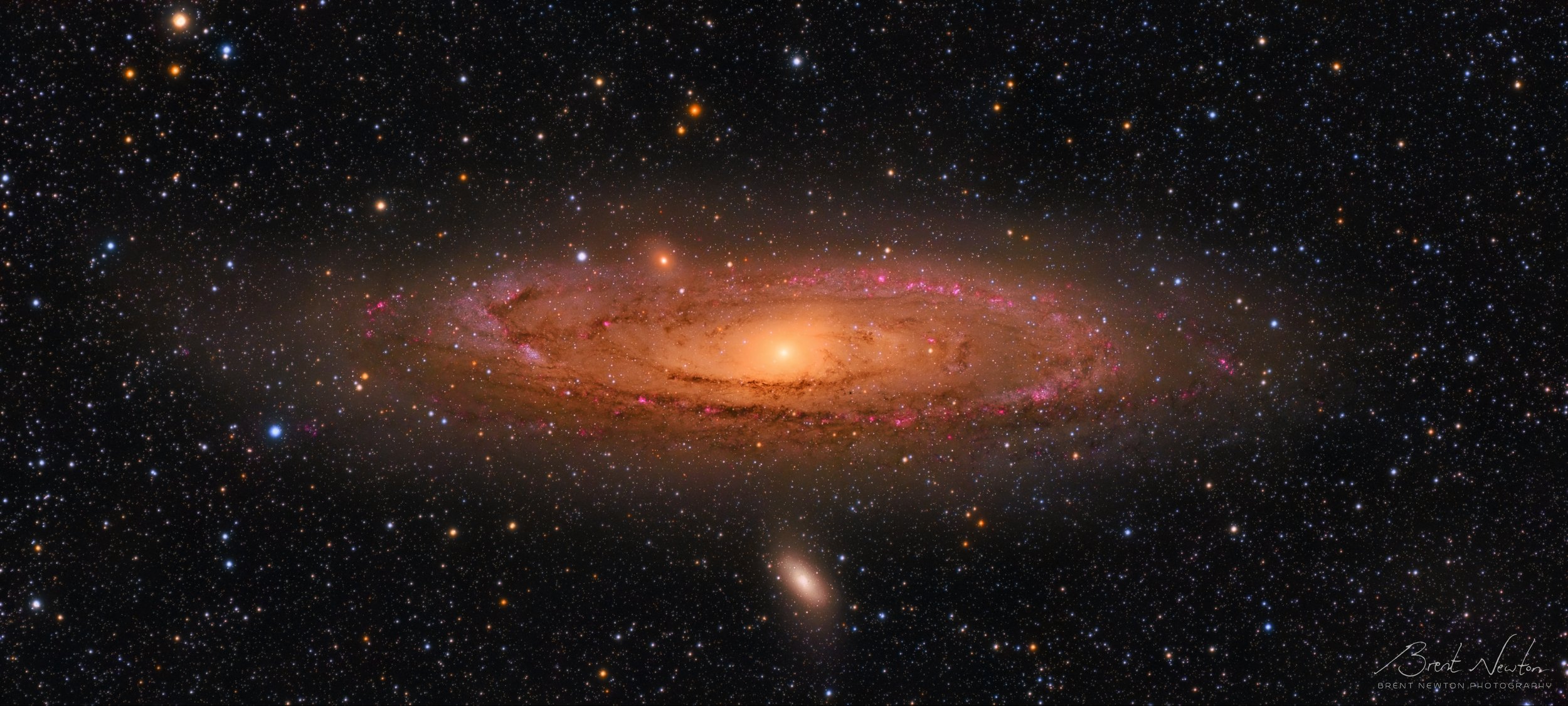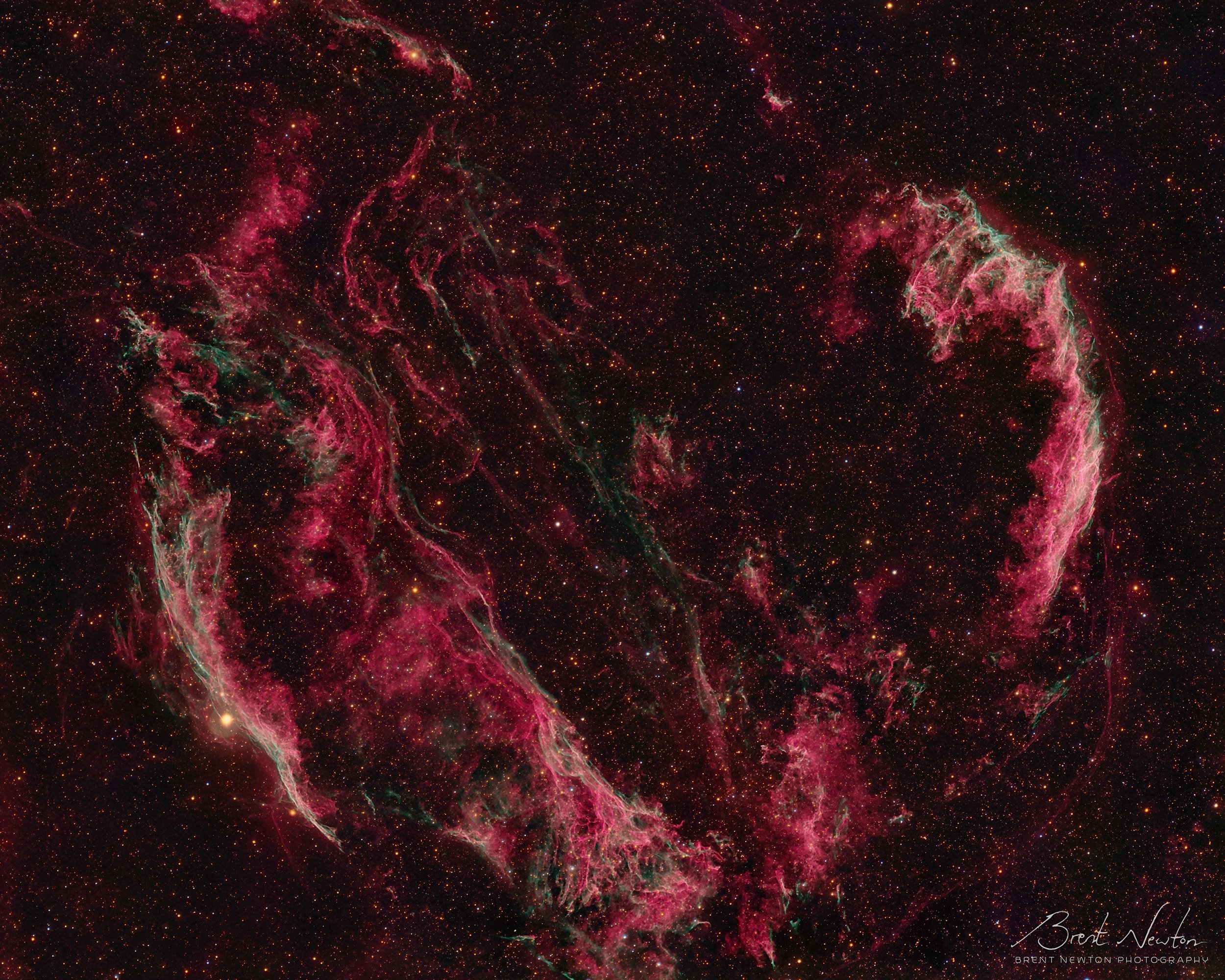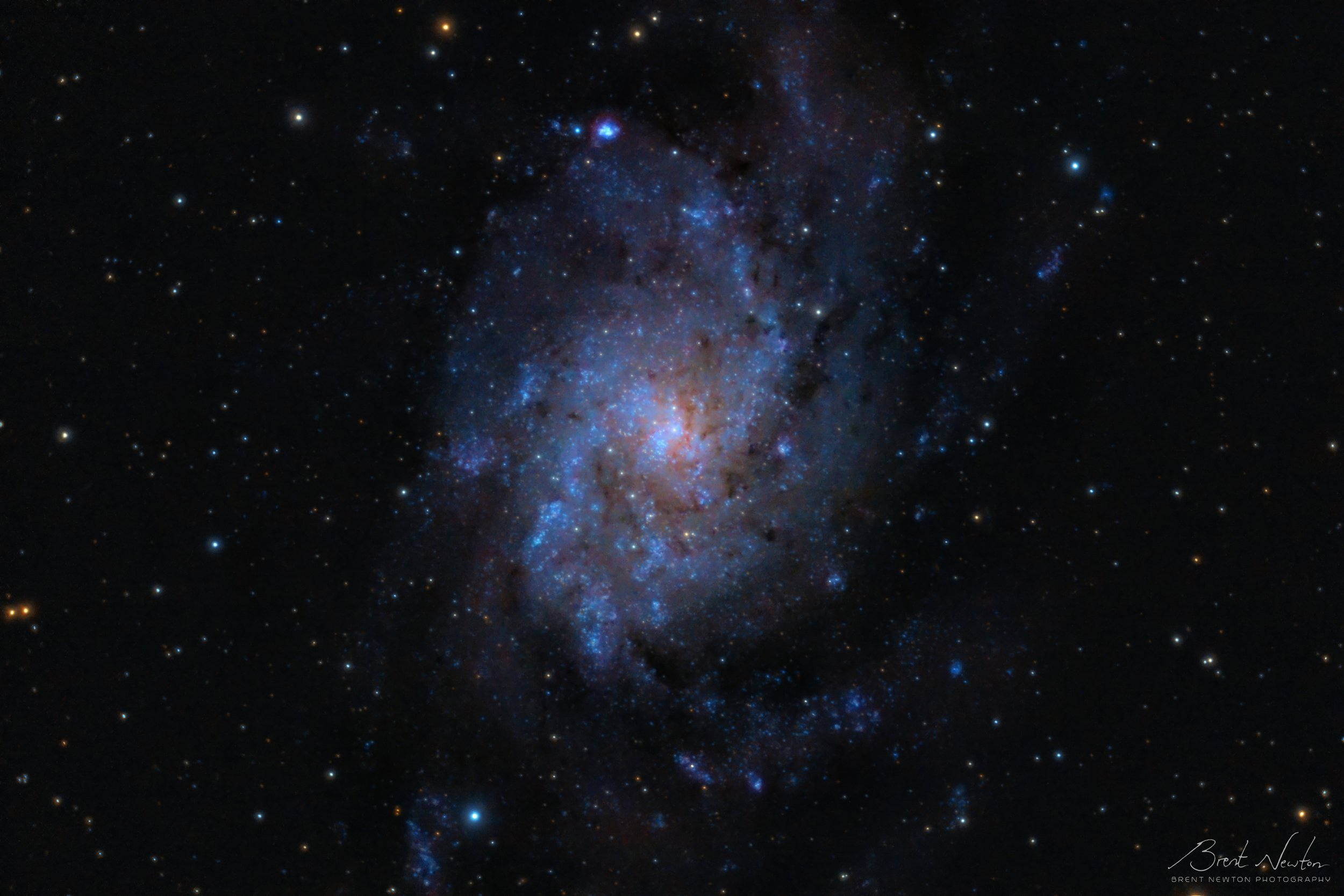Long exposure photography focused on night sky nebulae using a minimum of 350mm focal length. The FAQ page covers the techniques and equipment used in detail
Sharpless 216 & 221 Region captured over 45 hours during November 2022 - January 2023 and AAPOD2 on 19 Mar 2023
“The Pillars of Darkness” in Taurus. 16 hours exposure from the 2021 Okie-Tex Star Party and AAPOD2 for 23 Nov 2021
“The Reaper” in Aquila. 13 hours exposure from the 2021 Okie-Tex Star Party and AAPOD2 on 23 Dec 2021
The Summer Beehive Cluster, a 45M year-old Open Cluster 1,200 LY away shot in 6 hours exposure in May 2020
The Sadr Region in SHO False Color. 4 hours total exposure from August 2019
The Iris Nebula, 17 hours exposure from August 2018
The Wizard Nebula, 29 hours exposure from Oct-Nov 2018
The Orion nebula, 20 hours exposure from December 2017
The Lagoon and Trifid nebula, taken with 6 hours exposure in July 2017, later supplemented with 1 hour of narrowband from July 2020
M81 & M82 galaxies, 7 hours exposure from January 2017
NGC 891, an edge-on Galaxy 27M LY distant. 3 hours exposure from January 2017
The Orion Nebula, originally captured in November 2016 with 4.5 hours exposure and later supplemented with 6 hours of narrowband in 2018
The M33 Galaxy, 35min capture from October 2016
The Eagle Nebula, 4 hours exposure from September 2016
NGC 7635 captured with 2.75 hours exposure from September 2016
NGC 6888 captured with 1 hour total exposure from September 2016
M27 captured with 1.5 hours exposure from July 2016
The M51 Galaxy with 55 minutes exposure from July 2016




